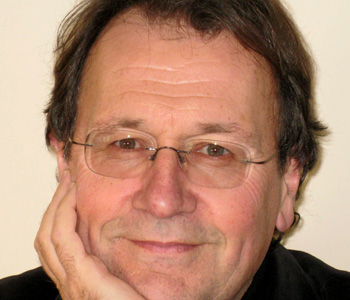Paul Fleming
Exemplarity and Mediocrity: The Art of the Average from Bourgeois Tragedy to Realism
Stanford University Press
240 pages, 9 x 6 inches
ISBN 978 0804758901
My book explores various conflicts surrounding the terms “mediocre,” “common,” “ordinary,” and “non-exceptional” in literary and aesthetic discourse since the eighteenth century, when the average man, the market place, and (proto-)democratic institutions began to assert themselves.
Art, it should be noted, has always had an uneasy relation to mediocrity. Horace himself claims that a middling lawyer is still valuable, while a mediocre poet “falls below contempt.” And with the traditional confinement of the proverbial “little guy” to comedy and the art of ridicule, the common man and everyday life were largely removed from elevated artistic expression.
This state of affairs, as I delineate, begins to undergo profound changes in the eighteenth century. On the one hand, literature now repeatedly attempts to address, affect, and ultimately educate the common man by representing his or her position and milieu. From bourgeois tragedy to realism and beyond, average heroes and everyday life begin to saturate modern letters. On the other hand, however, just when the subject matter of high art turns to the common and quotidian, aesthetics mobilizes the genius and the imperative of originality to brace itself against an excessive intrusion of the average on the level of critic and artist (e.g., majority rule in taste or the artist as “career choice”). Via this exclusion, art secures autonomy in a society where “success” is increasingly gauged by popularity.
One of the main arguments I make, therefore, is that the aesthetic issues surrounding the average and ordinary are resolved or at least contained via a strategy of simultaneous inclusion and exclusion. Literature reaches out to the middle class as its audience and subject matter, but excludes the average man as artist and only includes him as a critic and arbiter of taste under the strictest conditions.
The tension between exemplarity and mediocrity is also played out in artistic production itself. One of the crucial questions I pursue in the book is how modern literature (and art in general) increasingly can be attuned to quotidian life – common heroes, everyday life, non-extraordinary events – while at the same time avoiding all notions of mediocre quality. That is, how can art embrace mediocre life without falling prey to it in turn?
Art, I argue, can be seen as attempting to fulfill this double demand by aesthetically transforming the quotidian and thus lending it an exemplary form. Literature repeatedly puts the common person and ordinary life at the center of literary presentation but only in order to adorn them and render them exemplary. By, paradoxically, offering exemplary models of mediocrity, art simultaneously seeks to fulfill the demand of originality and grant aesthetic dignity to common life.

Literature reaches out to the middle class as its audience and subject matter, but excludes the average man as artist and only includes him as a critic and arbiter of taste under the strictest conditions.
Were a browsing reader to open my book at random, he or she could do worse than opening up to the third chapter, which deals with the average artist. Here I examine Goethe and Schiller’s notes and charts for an unrealized project on the “uses and damages” of dilettantism for art. It should be underscored that as a figure of mediocrity, the dilettante is not a complete hack. On the contrary, the dilettante has skills, shows diligence, and clearly is passionate about art, but ultimately lacks the natural gift, the je ne sais quoi that separates the genius (a rare figure) from the rest.
The stakes of Goethe and Schiller’s reflections, I argue, amount to this: they view the rise of dilettantism (which is concomitant with the bourgeois subject and the art market) not only as a new threat to art but also as a previously unheard-of possibility: the genuine aesthetic education of society. The more people try their hand at producing artworks, the greater the chance for developing a discerning public that could head-off the emergent divide between high and popular culture. Dilettantism, which threatens art by diluting it, is also the hope for saving it.
The possibility of such an aesthetically enlightened public comes, however, at the price of a new anxiety. In the face of the rapid proliferation of dilettantism, Goethe and Schiller, I argue, develop what amounts to an inverse form of Harold Bloom’s famous notion of the “anxiety of influence.”
Whereas Bloom theorizes the artist’s fear of being unduly influenced by previous great ones, Goethe and Schiller re-direct the artist’s anxiety—they worry about the influence of great art on prolific dilettantes, who (numerically) dominate the contemporary scene and then produce average but acceptable works in the mode of the maestro. The result is not only a dissolution of one’s perceived greatness; much more emphatically, if the average “artist” can produce art that seems to be of the same ilk as genius, then perhaps the fundamental divide between genius and average is more porous than one would like to think. This, I believe, is what Goethe and Schiller fear the most and the true anxiety of the dilettante-project: a quaking of the foundation of the aesthetics of originality, in which there could be something like a “genius” mode of imitation and derivation.
Goethe and Schiller’s answer to this threat is what I call an Art School for Non-Artists: a military-like academy that subjects the ambitious but (from their perspective) ultimately non-brilliant dilettantes to the most rigorous, rule-bound training in the arts, progressing with an exacting measure, step-by-step, to the ultimate goal: the dilettante realizing that the goal—being an artist—will never be expected. It is an art school in which failure is success or, rather, success lies in recognizing one’s failure.
Dilettantes, according to Goethe and Schiller, must learn that, regardless of what they produce, it will never be true art (the work of genius). The delicate balance of this special art school is to disabuse the amateur of all artistic aspirations while not crushing all interest in art. The school of the dilettantes is premised on the conviction that the lifelong amateur can best serve art by knowing its intricacies and techniques and then using this knowledge not to produce but to judge art works. This is the story of Wilhelm Meister’s Apprentice Years in a nutshell.
Were a browsing reader to open my book at random, he or she could do worse than opening up to the third chapter, which deals with the average artist. Here I examine Goethe and Schiller’s notes and charts for an unrealized project on the “uses and damages” of dilettantism for art. It should be underscored that as a figure of mediocrity, the dilettante is not a complete hack. On the contrary, the dilettante has skills, shows diligence, and clearly is passionate about art, but ultimately lacks the natural gift, the je ne sais quoi that separates the genius (a rare figure) from the rest.
The stakes of Goethe and Schiller’s reflections, I argue, amount to this: they view the rise of dilettantism (which is concomitant with the bourgeois subject and the art market) not only as a new threat to art but also as a previously unheard-of possibility: the genuine aesthetic education of society. The more people try their hand at producing artworks, the greater the chance for developing a discerning public that could head-off the emergent divide between high and popular culture. Dilettantism, which threatens art by diluting it, is also the hope for saving it.
The possibility of such an aesthetically enlightened public comes, however, at the price of a new anxiety. In the face of the rapid proliferation of dilettantism, Goethe and Schiller, I argue, develop what amounts to an inverse form of Harold Bloom’s famous notion of the “anxiety of influence.”
Whereas Bloom theorizes the artist’s fear of being unduly influenced by previous great ones, Goethe and Schiller re-direct the artist’s anxiety—they worry about the influence of great art on prolific dilettantes, who (numerically) dominate the contemporary scene and then produce average but acceptable works in the mode of the maestro. The result is not only a dissolution of one’s perceived greatness; much more emphatically, if the average “artist” can produce art that seems to be of the same ilk as genius, then perhaps the fundamental divide between genius and average is more porous than one would like to think. This, I believe, is what Goethe and Schiller fear the most and the true anxiety of the dilettante-project: a quaking of the foundation of the aesthetics of originality, in which there could be something like a “genius” mode of imitation and derivation.
Goethe and Schiller’s answer to this threat is what I call an Art School for Non-Artists: a military-like academy that subjects the ambitious but (from their perspective) ultimately non-brilliant dilettantes to the most rigorous, rule-bound training in the arts, progressing with an exacting measure, step-by-step, to the ultimate goal: the dilettante realizing that the goal—being an artist—will never be expected. It is an art school in which failure is success or, rather, success lies in recognizing one’s failure.
Dilettantes, according to Goethe and Schiller, must learn that, regardless of what they produce, it will never be true art (the work of genius). The delicate balance of this special art school is to disabuse the amateur of all artistic aspirations while not crushing all interest in art. The school of the dilettantes is premised on the conviction that the lifelong amateur can best serve art by knowing its intricacies and techniques and then using this knowledge not to produce but to judge art works. This is the story of Wilhelm Meister’s Apprentice Years in a nutshell.

Goethe and Schiller view the rise of dilettantism not only as a new threat to art but also as a previously unheard-of possibility: the genuine aesthetic education of society.
One way to think about the book’s significance would be to consider it as an engagement with the inherent tension in the terms “average,” “common,” and “ordinary”—a tension that exceeds questions of art and goes straight to the heart of democracy. On the one hand, these terms express an optimum and an ideal, on the other, a pejorative sense of middling and mediocre quality.
One sees this tension within the notion of the “common man.” As a station in life and as a political voice, the common man is repeatedly celebrated, often as a locus of “truth,” of how things are “on main street.” But even here one does not want to fulfill this position in an average way; one wants to be an excellent, outstanding embodiment of the average man, its most perfect specimen. Alexis de Tocqueville already diagnosed this distinct psychosis of democracy, particularly in America: modern, democratic man suffers from two conflicting pathologies – the cult of equality (“I’m an average guy”) and the cult of individualism (“I’m different from everyone else”).
My book’s discussion of the literary permutations and strategies for addressing such a dilemma may help to consider this phenomenon on a larger, more pervasive scale.




We don't put paywalls. We don't distract you with ads. We don't sell your data.
Please help to keep this running!